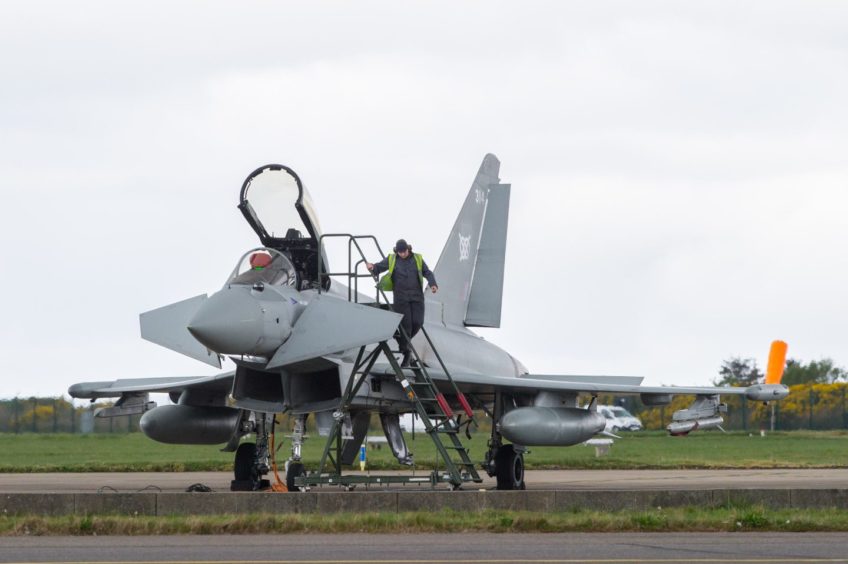Fighter jets from RAF Lossiemouth were scrambled more than a dozen times during 2020 to respond to potential intruders.
Statistics published by the Ministry of Defence has revealed Typhoon crews at the Moray military base were called into action 14 times – the same total as 2019.
The figures show that the QRA (quick reaction alert) operation was run 11 times to track Russian planes and three times in response to other aircraft.
The numbers include the period when personnel were temporarily located to Leuchars while RAF Lossiemouth’s runway was being resurfaced.
What is QRA at RAF Lossiemouth?
The QRA operation involves RAF personnel being alert and ready to respond 24/7 to unidentified aircraft or potential intruders.
The crews are the UK’s first line of defence if an enemy was to choose to launch an attack on the country.
The specialist skills lead to RAF Lossiemouth crews being deployed to assist Nato allies defend their own airspace with scrambles in 2020. In September personnel returned from a four-month deployment in Lithuania, where they intercepted 15 Russian aircraft.
However, the RAF has previously explained that the QRA scrambles are also necessary to ensure the safety of all aircraft.
A spokesman said: “Russian military aircraft operating within the UK Flight Information Region can act as a hazard to other air users, especially in busy airspace over the North Sea.
“Often these aircraft do not squawk, which involves transmitting a code to identify the aircraft’s intentions, position, and altitude, or talk to UK air traffic controllers, causing other civilian airliners in the area to be re-routed to prevent aircraft from flying too close.”
Crews from RAF Lossiemouth are responsible for responding to potential intruders approaching the northern half of the UK while personnel at RAF Coningsby in Lincolnshire cover the southern half.
